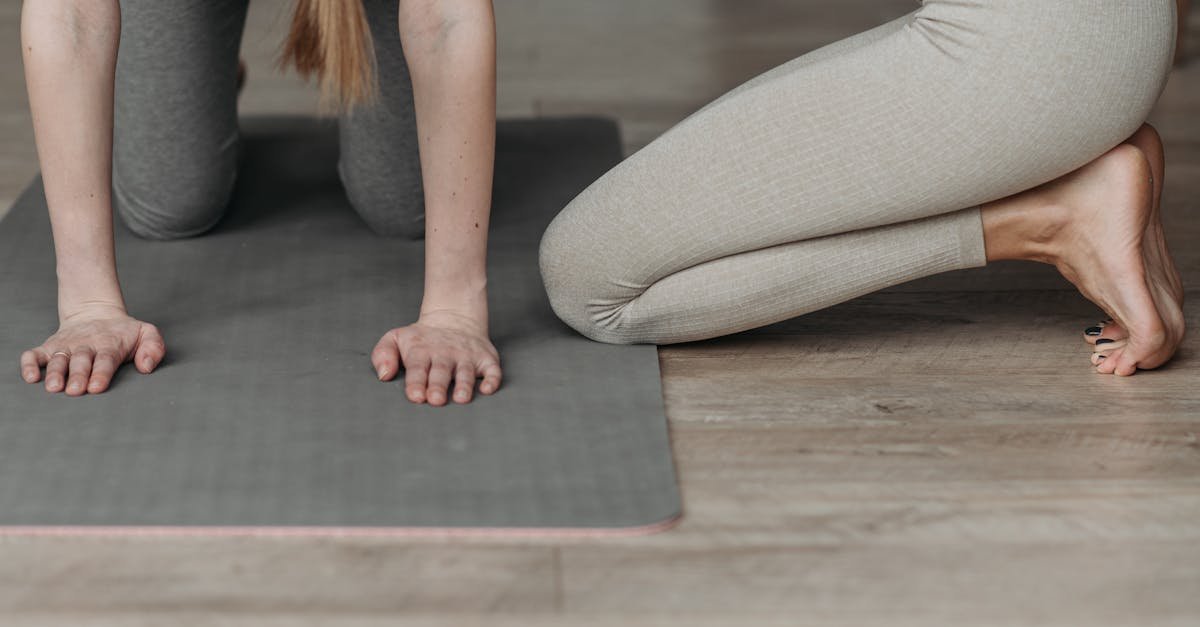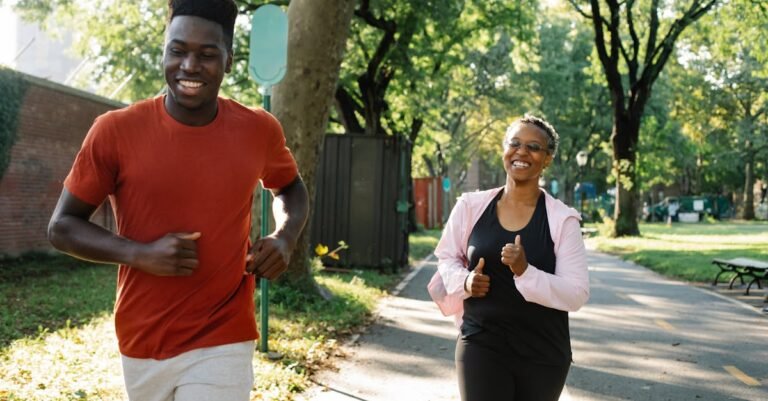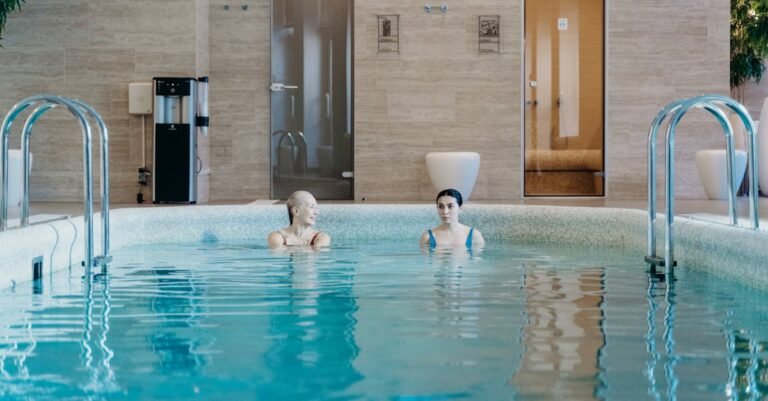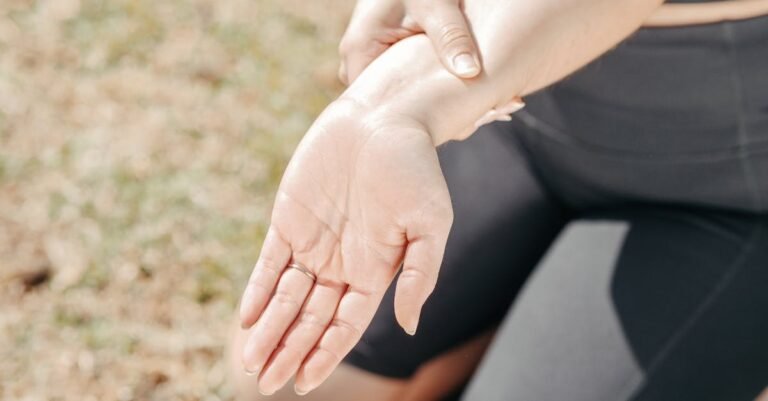- Low Impact Workout Options For Joint Health: Move Freely, Feel Better
- Why Bother with Low Impact Exercise Anyway?
- Top Low Impact Workout Choices for Happy Joints
- Important Considerations Before Starting
- Making Low Impact Exercise a Habit
- Conclusion: Embrace Movement, Protect Your Joints
- Frequently Asked Questions (FAQs)
Low Impact Workout Options For Joint Health: Move Freely, Feel Better
Let’s talk about something that affects so many of us: joint pain. Whether it’s a nagging knee, a cranky hip, or stiff fingers, dealing with joint discomfort can really put a damper on life, right? It can make simple things feel tough and might even make you hesitant to exercise. But here’s the good news: movement can actually be one of the best things for your joints, provided you choose the right kind of movement. That’s where low impact exercise swoops in like a superhero for your joints!
You might be thinking, “Exercise? Isn’t that going to make my joints hurt more?” It’s a common concern, but sticking to low impact options means you get all the fantastic benefits of physical activity without putting excessive strain on those precious joints. Forget jarring movements and high-force landings; we’re talking smooth, gentle, and effective ways to stay active, strong, and mobile. Ready to explore how you can keep moving and feel better? Let’s dive in!
Why Bother with Low Impact Exercise Anyway?
Okay, so “low impact” sounds nice, but what does it really mean for your body, especially your joints? Why should you choose it over, say, running or jumping jacks? It all boils down to reducing stress while maximizing benefits.
Understanding Joint Stress: The High vs. Low Impact Dilemma
Picture your joints – knees, hips, ankles, shoulders – as intricate hinges and shock absorbers. They have cartilage, a smooth, slippery tissue that allows bones to glide over each other, and synovial fluid, which acts like oil to keep things lubricated. High impact activities, like running on pavement, plyometrics (jump training), or even some team sports, involve moments where both feet leave the ground simultaneously, leading to a forceful landing. Think about the jolt that travels up your leg when you land after a jump – that’s impact!
Over time, or if you already have conditions like arthritis or previous injuries, this repeated high impact can wear down cartilage, increase inflammation, and lead to pain. It’s like constantly slamming a car door – eventually, the hinges are going to complain.
Low impact exercise, on the other hand, keeps at least one foot on the ground (or offers support through water or equipment) at all times. This drastically reduces the jarring forces traveling through your joints. Think of it as gently closing that car door instead of slamming it. You still get the movement, but without the damaging stress. Examples include walking, swimming, cycling, and using an elliptical machine. These activities allow you to elevate your heart rate, work your muscles, and improve endurance without pounding your joints into submission.
The Amazing Benefits of Gentle Movement for Your Joints
Choosing low impact isn’t just about avoiding pain; it’s about actively nurturing your joints. Gentle movement offers a cascade of positive effects:
Lubrication and Nourishment
Remember that synovial fluid we mentioned? It’s crucial for joint health, acting like WD-40 for your body’s hinges. Interestingly, cartilage doesn’t have its own direct blood supply; it gets its nutrients from this synovial fluid. Movement helps circulate this fluid, essentially “feeding” your cartilage and keeping it healthy. Think of it like squeezing a sponge – movement compresses and releases the cartilage, allowing fluid and nutrients to flow in and waste products to flow out. Regular, gentle motion keeps this vital process going.
Strengthening Supporting Muscles
Your joints don’t work in isolation. They rely heavily on the surrounding muscles, tendons, and ligaments for support and stability. Weak muscles mean more stress falls directly on the joint itself. Low impact exercises like cycling, swimming, or even resistance training with proper form help build strength in the muscles around your knees, hips, shoulders, and spine. Stronger muscles act like natural braces, absorbing shock, improving alignment, and reducing the load on the joint cartilage. It’s a team effort, and strengthening the supporting players takes pressure off the main star (your joint).
Pain Relief and Reduced Stiffness
It might seem counterintuitive, but moving often helps reduce joint pain and stiffness, especially the kind associated with arthritis. Exercise releases endorphins, your body’s natural painkillers, which can improve your mood and change your perception of pain. Furthermore, gentle movement helps maintain and even improve your range of motion. When joints are stiff, we tend to avoid moving them, which only leads to more stiffness and muscle weakness – a vicious cycle. Low impact activity breaks this cycle by encouraging flexibility and reducing that morning “creakiness.”
Top Low Impact Workout Choices for Happy Joints
Alright, you’re convinced that low impact is the way to go. But what exactly can you do? The great news is there are plenty of enjoyable and effective options!
Swimming and Water Aerobics: Buoyancy Bliss
Ah, the pool! It’s often hailed as the ultimate joint-friendly exercise environment, and for good reason.
Why Water Works Wonders
Water offers incredible buoyancy. When you’re submerged up to your neck, you’re only bearing about 10% of your body weight! This dramatically reduces the impact and stress on your weight-bearing joints like hips, knees, and ankles. It’s like exercising in near-zero gravity. But don’t be fooled – water also provides resistance. Every movement you make pushes against the water, working your muscles effectively without any jarring. Plus, the hydrostatic pressure (the pressure of the water against your body) can help reduce swelling and improve circulation.
Getting Started in the Pool
You don’t need to be an Olympic swimmer! Simply walking back and forth in the shallow end is a fantastic start. Water aerobics classes are incredibly popular and offer structured routines often set to music, making it fun and social. Lap swimming using different strokes (freestyle, backstroke, breaststroke) provides a great cardiovascular workout. Even deep-water running (using a flotation belt) mimics running mechanics without any impact. Start slowly, maybe 20-30 minutes, and gradually increase your time and intensity as you feel comfortable.
Cycling (Stationary or Outdoor): Smooth Pedaling Power
Whether you prefer the fresh air or the climate-controlled gym, cycling is another excellent low impact choice.
Choosing the Right Bike Setup
Proper bike fit is crucial to avoid knee or hip strain. For both stationary and outdoor bikes:
- Saddle Height: Adjust the seat so that when your foot is at the bottom of the pedal stroke, your knee has a slight bend (around 25-35 degrees). Too low, and you put pressure on the front of the knee; too high, and you might strain the back of the knee or rock your hips.
- Handlebars: Position them so you can maintain a comfortable, upright posture without straining your back or neck.
- Resistance: Start with low resistance and gradually increase it. Avoid grinding away at very high resistance, especially initially. Focus on a smooth, consistent cadence (pedaling speed).
Recumbent bikes (where you sit in a chair-like seat with back support) can be particularly good if you have back pain or significant knee issues, as they distribute weight differently.
Indoor vs. Outdoor Considerations
Stationary bikes offer convenience and safety – no worries about traffic, weather, or terrain. You can easily control resistance and monitor your progress. Outdoor cycling adds the benefit of scenery and fresh air but requires more attention to safety, traffic, and choosing relatively flat, smooth routes initially to avoid excessive strain from hills or rough surfaces.
Walking: The Accessible All-Star
Good old walking! It’s free, requires no special equipment (beyond good shoes), and can be done almost anywhere.
Making Walking Joint-Friendly
While generally low impact, you can make walking even kinder to your joints:
- Choose Your Surface: Softer surfaces like grass, dirt trails, or a running track are more forgiving than concrete sidewalks.
- Wear Proper Shoes: Invest in supportive, well-cushioned walking shoes that fit well. Replace them regularly as the cushioning wears down.
- Focus on Form: Walk tall, engage your core, swing your arms naturally, and land on your midfoot or heel, rolling through to your toes. Avoid overly long strides.
- Pace Yourself: Start with shorter distances and a comfortable pace. You can gradually increase duration and speed. Using walking poles (Nordic walking) can also help distribute effort and reduce load on the lower body joints.
Yoga and Tai Chi: Mind-Body Harmony for Joints
These ancient practices combine gentle movement, balance, flexibility, and mindfulness – a fantastic combination for joint health.
Gentle Flows and Poses
Both yoga and Tai Chi involve slow, controlled movements that improve range of motion, strength, and balance without impact.
- Yoga: Look for gentle, hatha, restorative, or “yoga for arthritis” classes. Avoid styles with lots of jumping or fast transitions (like power yoga or Ashtanga) initially. Focus on proper alignment and use props like blocks and straps to modify poses and avoid overstretching. Key benefits include improved flexibility and muscle strengthening around joints.
- Tai Chi: Often described as “meditation in motion,” Tai Chi involves fluid, circular movements that gently work the joints and improve balance significantly. Its slow, deliberate nature makes it extremely low impact and suitable for almost everyone. Studies have shown it can reduce pain and improve physical function in people with arthritis.
The focus on breath and body awareness in both practices also helps reduce stress, which can indirectly benefit joint pain.
Elliptical Training: Gliding Towards Fitness
Found in most gyms, the elliptical machine offers a cardiovascular workout that mimics running or walking but without the impact.
Your feet remain in contact with the pedals throughout the movement, gliding in an elliptical pattern. This eliminates the jarring landing phase associated with running. Most ellipticals have adjustable resistance and incline, allowing you to tailor the intensity. Many also have moving handlebars, providing an upper-body workout simultaneously. Maintain good posture (stand tall, don’t slouch) and avoid locking your knees.
Important Considerations Before Starting
Embarking on a new exercise routine, even a low impact one, requires a little preparation and ongoing awareness.
Listen to Your Body: The Golden Rule
This is paramount. Your body sends signals – learn to interpret them. Some mild muscle soreness after starting a new activity is normal (“good pain”). However, sharp, stabbing, or persistent joint pain is not normal (“bad pain”). Follow the “two-hour pain rule”: if you have significant joint pain for more than two hours after exercising, you likely overdid it. Next time, reduce the duration, intensity, or try a different activity. Don’t push through sharp pain; modify or stop the activity.
Talk to Your Doc: Getting Professional Advice
Before starting any new exercise program, especially if you have pre-existing joint conditions, arthritis, or other health concerns, it’s wise to chat with your doctor or a physical therapist. They can help you identify suitable activities, advise on any limitations you might have, and ensure exercise is safe for you. They might even be able to recommend specific exercises or modifications tailored to your needs.
Warm-Up and Cool-Down: Non-Negotiables
Don’t skip these crucial steps!
- Warm-Up (5-10 minutes): Prepare your body for exercise by gradually increasing your heart rate and blood flow to your muscles. Start with light cardio like marching in place or slow walking, followed by dynamic stretches (gentle movements that take your joints through their range of motion), like arm circles, leg swings, or torso twists. This helps lubricate the joints and makes muscles more pliable.
- Cool-Down (5-10 minutes): Gradually decrease the intensity of your workout. Follow up with static stretches (holding a stretch for 15-30 seconds) focusing on the major muscle groups you worked. This helps improve flexibility and may reduce post-exercise stiffness.
Making Low Impact Exercise a Habit
Knowing what to do is one thing; actually doing it consistently is another. How can you make low impact exercise a regular part of your life?
Finding Joy in Movement
Honestly, if you dread your workout, you’re unlikely to stick with it. The key is to find activities you genuinely enjoy! Maybe you love the feeling of gliding through the water, the rhythm of pedaling on a bike path, the tranquility of a yoga class, or the social aspect of water aerobics. Experiment with different low impact options until you find one (or a few!) that you look forward to. Put on music you love, exercise with a friend, or focus on how good you feel afterward.
Setting Realistic Goals
Don’t try to go from zero to hero overnight. Start small and build gradually. Maybe begin with 15-20 minutes of walking three times a week. Once that feels comfortable, you can increase the duration, frequency, or intensity. Setting achievable goals builds confidence and momentum. Celebrate your progress along the way – consistency is more important than intensity, especially when starting.
Conclusion: Embrace Movement, Protect Your Joints
Living with joint pain or wanting to protect your joints doesn’t mean you have to resign yourself to a sedentary life. Far from it! Low impact exercise offers a powerful way to stay active, manage pain, improve mobility, strengthen supporting muscles, and boost your overall well-being without putting undue stress on your vulnerable joints. From the supportive embrace of water to the smooth glide of an elliptical or the mindful flow of Tai Chi, there are fantastic options available. Remember to listen to your body, start slowly, warm up and cool down, and seek activities you truly enjoy. By embracing gentle movement, you’re not just exercising; you’re investing in healthier, happier joints for the long haul. So go on, get moving – your joints will thank you!
Frequently Asked Questions (FAQs)
FAQ 1: Can low impact exercise really help with arthritis pain?
Yes, absolutely! While it seems counterintuitive, gentle movement is highly recommended for most types of arthritis. Low impact exercise helps by strengthening the muscles that support the joints, improving flexibility and range of motion, maintaining healthy cartilage through fluid circulation, reducing stiffness, and releasing natural pain-relieving endorphins. The key is choosing appropriate activities and listening to your body.
FAQ 2: How often should I do low impact workouts?
General guidelines recommend aiming for at least 150 minutes of moderate-intensity aerobic activity (like brisk walking, swimming, or cycling) per week, spread over several days. You can break this down into smaller chunks, like 30 minutes five days a week, or even shorter 10-15 minute sessions throughout the day. It’s also beneficial to include strength-building exercises targeting major muscle groups at least two days a week. Start where you are comfortable and gradually increase frequency and duration.
FAQ 3: What if even low impact exercise causes pain?
If even gentle exercise consistently causes sharp or significant joint pain that lasts more than a couple of hours, it’s important to stop that specific activity and reassess. First, ensure your form is correct and you aren’t pushing too hard or too long. Consider trying a different type of low impact exercise – for example, if walking hurts, maybe swimming or stationary cycling will feel better. Most importantly, consult your doctor or a physical therapist. They can help diagnose the cause of the pain and recommend specific modifications, exercises, or therapies suitable for your condition.
FAQ 4: Can I lose weight with only low impact exercise?
Yes, you certainly can lose weight with low impact exercise. Weight loss primarily depends on creating a calorie deficit (burning more calories than you consume). Low impact activities like swimming, cycling, using the elliptical, and brisk walking can burn a significant number of calories, especially if done consistently and with moderate intensity. Combining regular low impact exercise with a healthy, balanced diet is an effective strategy for weight management that is also kind to your joints.
FAQ 5: Are there any low impact exercises I should avoid with bad knees?
While most low impact exercises are generally knee-friendly, some might still cause issues depending on the specific knee problem. For instance:
- Cycling: Incorrect seat height can aggravate knee pain. Ensure proper bike fit. Recumbent bikes are often easier on the knees.
- Yoga: Certain deep knee bends or poses that put pressure directly on the knee (like kneeling poses without padding) might need modification or avoidance. Inform your instructor about your knee issues.
- Swimming: While generally excellent, the frog kick used in breaststroke can sometimes strain the knees. Freestyle or backstroke using a flutter kick might be better options.
Activities like swimming, water walking/aerobics, and elliptical training are often particularly well-tolerated by people with knee problems due to minimal weight-bearing stress. Always listen to your body and consult a healthcare professional for personalized advice.










